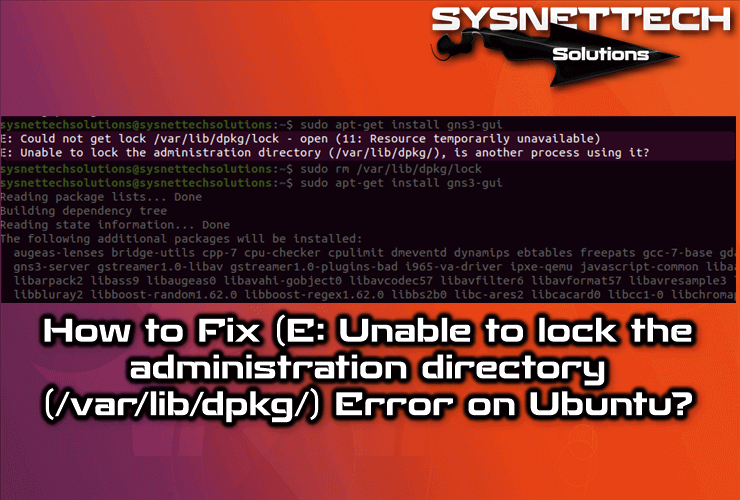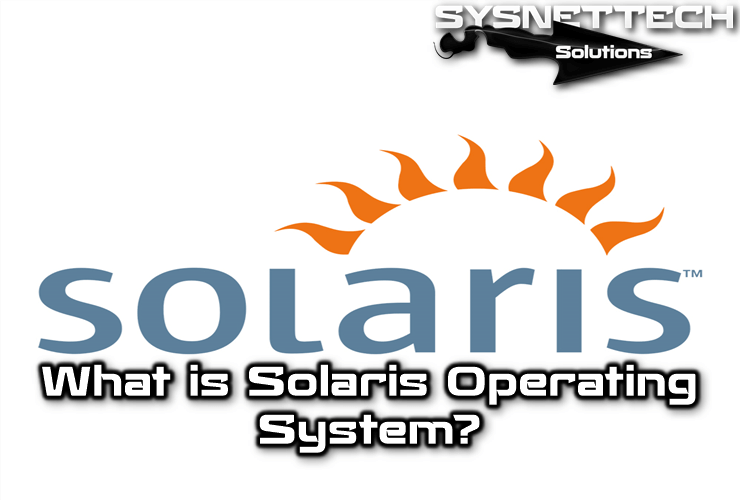In this article, we will examine how to set up and use Wine 7.0 Stable, which allows you to run Windows-based software with exe or msi extensions on a computer with Linux Debian 11 Bullseye installed.

How to Set Up Wine 7.0 to Run Windows Programs on Debian 11 Bullseye
In Windows operating systems, the extensions of setup files are usually exe or msi. But on Linux systems, the setup file of software can be deb, bundle, or any other extension.
If you are using Debian, one of the Linux distributions, on your host computer, if you want to install the Office program that works only compatible with Windows, you can do this with WineHQ software.
Thanks to WineHQ software, you can easily install and run a Windows program on your Linux system. However, you may not be able to install all software on your system with WineHQ due to compatibility issues. So you need to check the database of applications powered by Wine.
For example, you can continue to use the programs you know by installing Adobe Photoshop or Microsoft Office software on your Debian computer.
How to Install Wine
In order to install WineHQ software on your Debian operating system, you need to add the program’s key and repo addresses. After making the necessary settings, you can update the package list and install the latest version of WineHQ software.
Step 1
After starting your Debian computer, open the terminal and execute the “sudo dpkg –add-architecture i386” command to enable 32 Bit architecture. Then download WineHQ Key and add it to the relevant location.
sudo dpkg --add-architecture i386
wget -nc https://dl.winehq.org/wine-builds/winehq.key
sudo mv winehq.key /usr/share/keyrings/winehq-archive.key
Step 2
The repo sources of the Wine application may vary according to the Linux distributions. So you need to add the repo address that is appropriate for the distribution you are using. Execute the commands below in the terminal to download wine-hq.sources and copy it to sources.list.d.
wget -nc https://dl.winehq.org/wine-builds/debian/dists/bullseye/winehq-bullseye.sources
sudo mv winehq-bullseye.sources /etc/apt/sources.list.d/
Step 3
After editing the repo addresses on your Debian system, execute the “sudo apt update” command in the terminal to update the package list.
sudo apt update
Step 4
After refreshing the repo addresses, execute the “sudo apt install –install-recommends winehq-stable” command in the terminal to download and install the Wine Stable version.
sudo apt install --install-recommends winehq-stable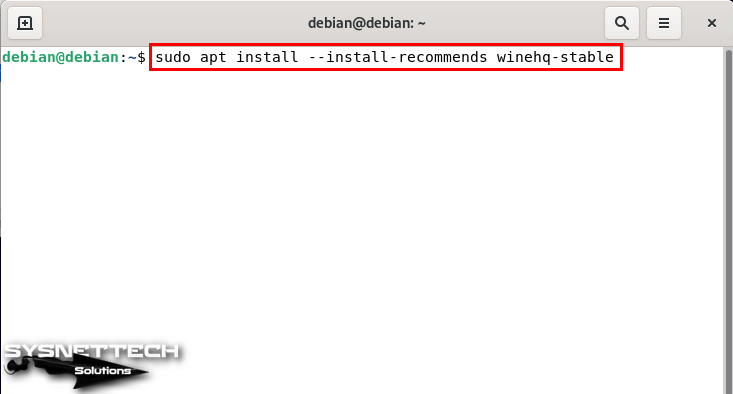
Step 5
All Wine related dependent packages will use 1,748 MB (1.7 GB) of additional disk space on your system. After making sure that you have free space on your disk, press Y and Enter to confirm the installation of the packages.
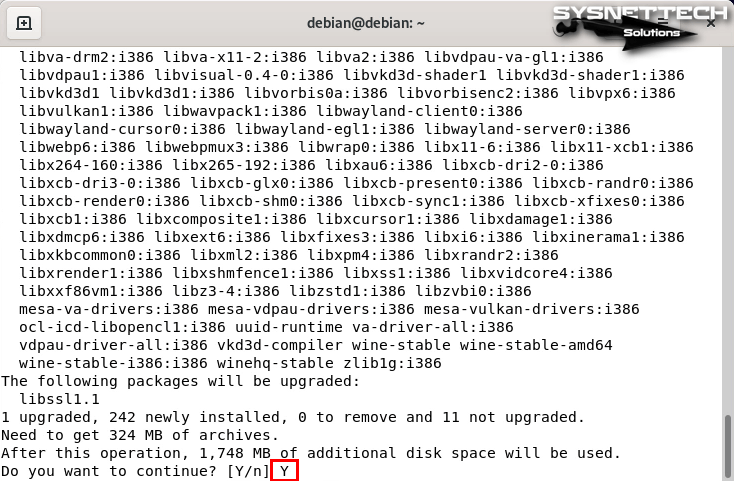
Step 6
After installing dependent packages and Wine, you can check the version of the program with the “wine –version” command from the terminal.
wine --version
Step 7
Execute the “winecfg” command in the terminal to view all wine-related settings.
winecfg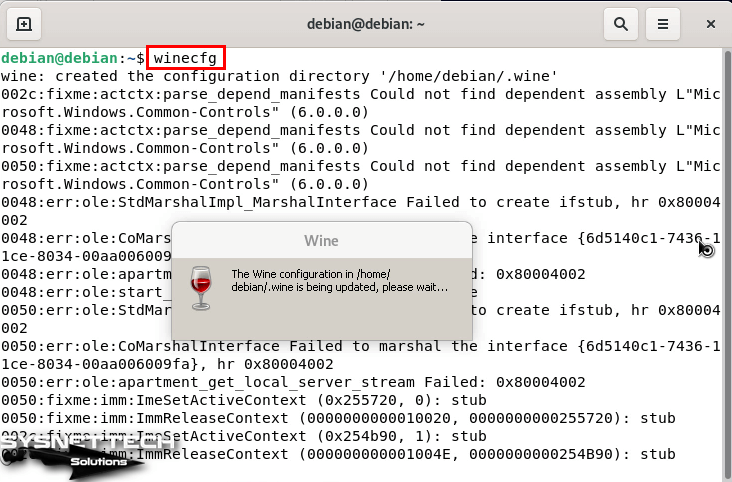
Step 8
After the WineHQ settings are updated, in the Wine Mono Installer window that opens, click the Install button to install the necessary packages for the NET framework-based applications to work correctly.

Step 9
When Wine Configuration opens, you can check the stable version you have installed from the About section.

How to Install a Windows Program
After installing Wine on Debian, it is to download and install the setup file of a Windows-compatible program you want to use on your system.
Step 1
For example, to download the setup file of the widely used Notepad++ software to your computer, visit https://notepad-plus-plus.org/downloads/ and download the latest version of the program.

Step 2
You can download the program more easily with the terminal instead of downloading it from the web page. Open the terminal and navigate to the location where you want to download the program with the “cd ~/Downloads” command. Then download the file to your PC using the link of the program via the wget command.
cd ~/Downloads
wget https://github.com/notepad-plus-plus/notepad-plus-plus/releases/download/v8.4.2/npp.8.4.2.Installer.x64.exe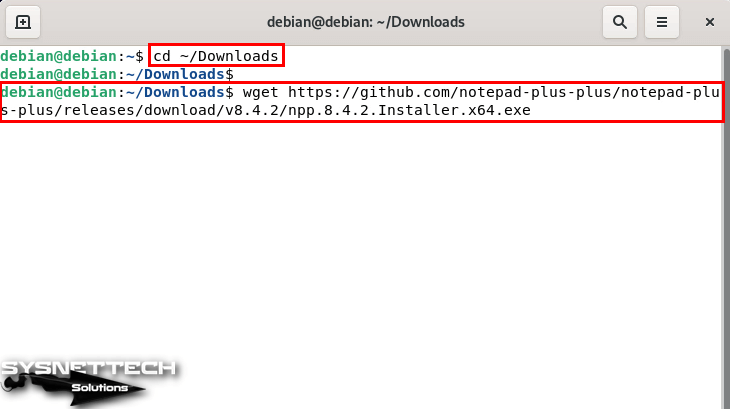
Step 3
To run the exe file you downloaded, execute the “wine npp.8.4.2.Installer.x64.exe” command in the terminal.
wine npp.8.4.2.Installer.x64.exe
Step 4
When the Notepad++ setup wizard opens, click Next to continue.
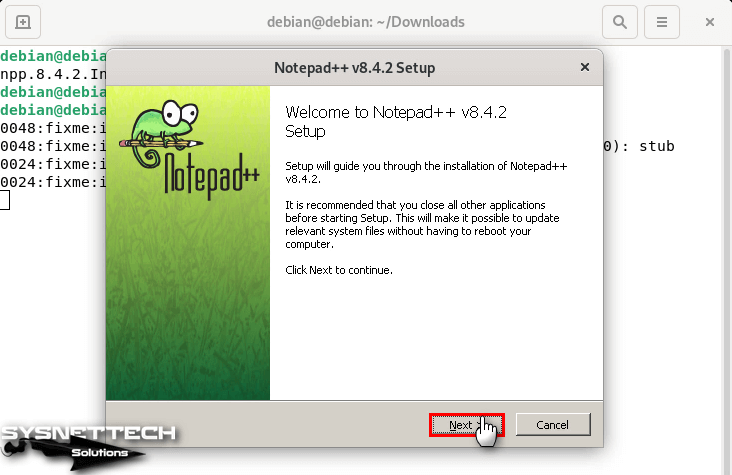
Step 5
After reading the license terms of the note-taking application, click I Agree to confirm.
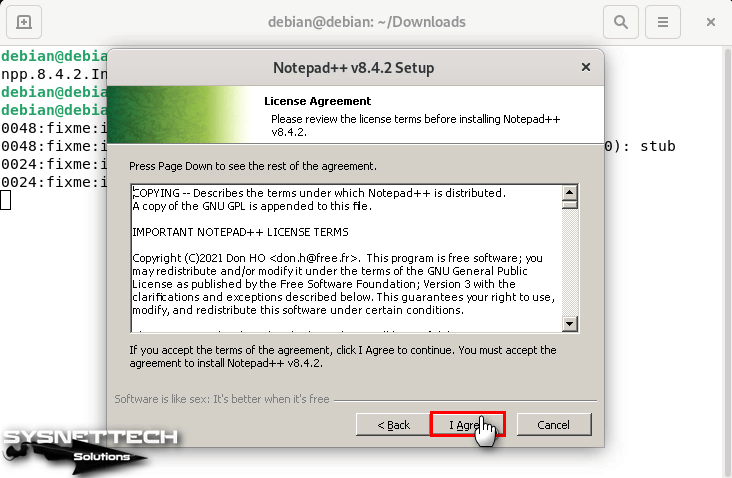
Step 6
Continue without changing the Notepad++ default installation location.

Step 7
If you are using this program professionally, you can edit some of its components.
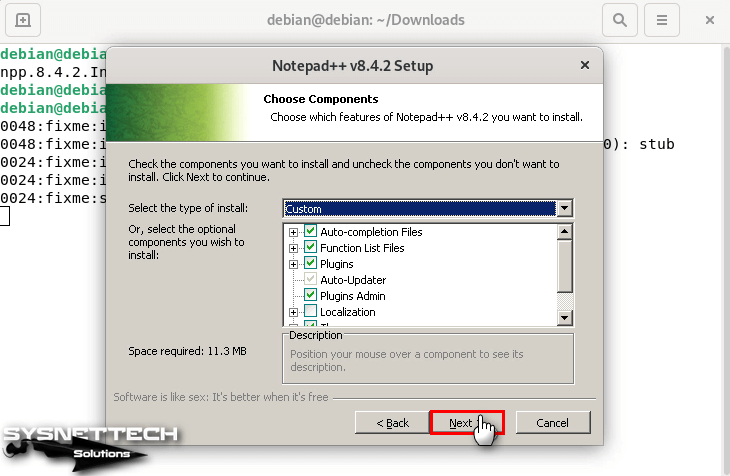
Step 8
Finally, set whether to create a desktop shortcut and click the Install button.

Step 9
After installing the Windows compatible Notepad software on your Debian PC, run it.

Step 10
Click Help / About from the tool menu to verify that you have installed the latest version of Notepad++.

How to Uninstall Wine
If you want to remove Wine from your PC, first back up your files or projects that you have created with the software you use, and then you can completely remove it from your system.
Step 1
To remove all Wine related packages from your system, execute the “sudo apt remove wine*” command in the terminal and then type your root password and press Enter.
sudo apt remove wine*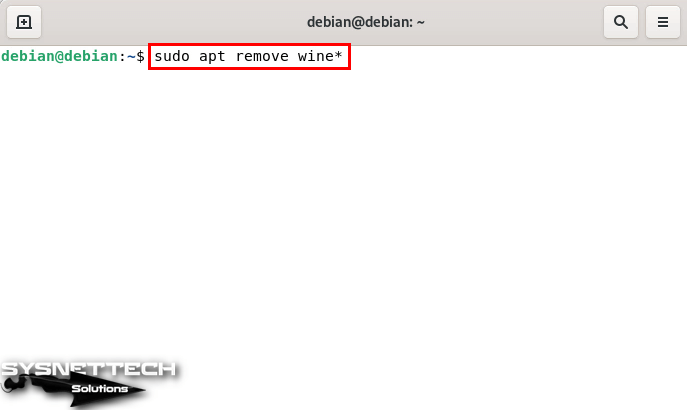
Step 2
After removing all packages belonging to WineHQ, 685 MB of space will be freed on your disk. Press Y and Enter to confirm deleting all dependent packages.
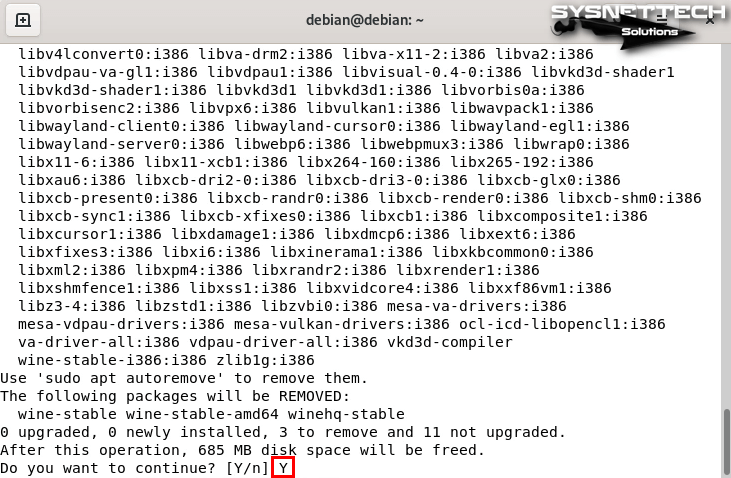
Step 3
After uninstalling Wine software from your PC, execute the “sudo apt autoremove && sudo apt autoclean” command in the terminal to clean all unnecessary packages.
sudo apt autoremove && sudo apt autoclean
Step 4
You can see the unnecessary packages of the applications you installed and uninstalled before installing Wine. Press Y and Enter to confirm the deletion of all packages.

Step 5
Finally, execute the commands below in the terminal to delete the WineHQ source and key that you added to your system’s sources.list file. To confirm that WineHQ has been removed, try checking the software version again and verify that the command does not work.
sudo rm -rf /etc/apt/sources.list.d/winehq-bullseye.sources
sudo rm -rf /usr/share/keyrings/winehq-archive.key
Video
Related Articles
♦ How to Install WineHQ on Ubuntu
♦ How to Install WineHQ on Linux Mint
♦ How to Install Debian
♦ How to Install PlayOnLinux on Linux Mint
♦ How to Install Ubuntu

